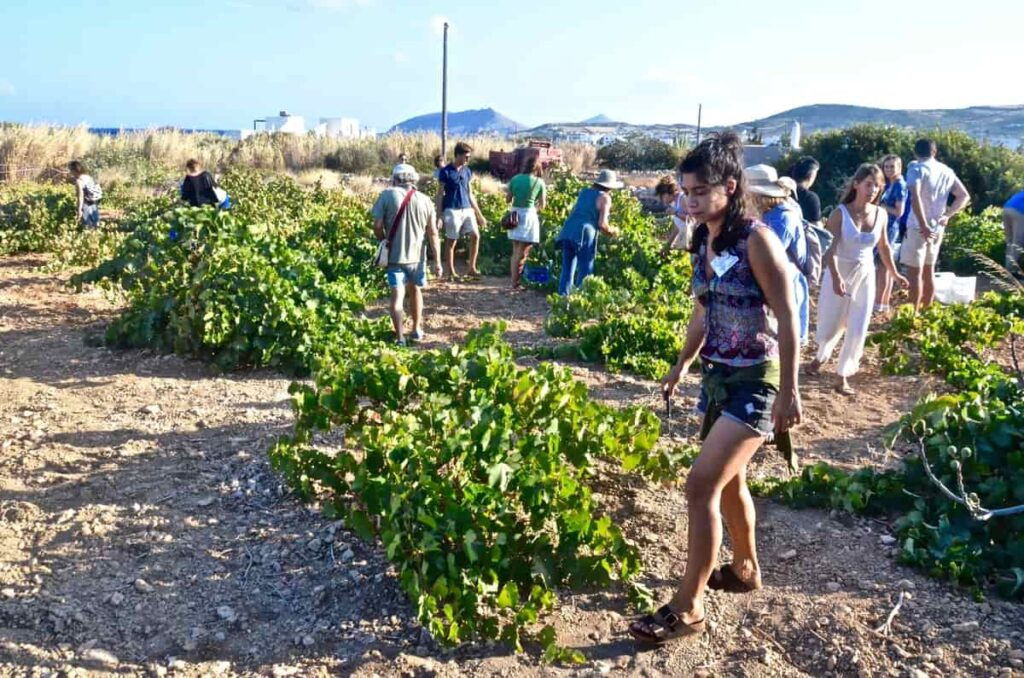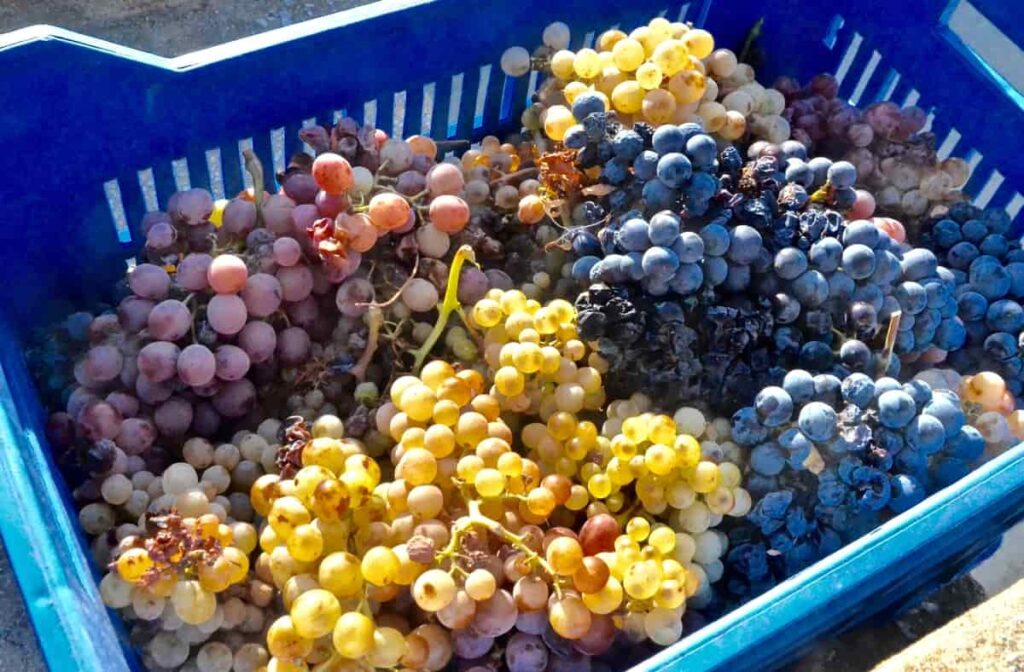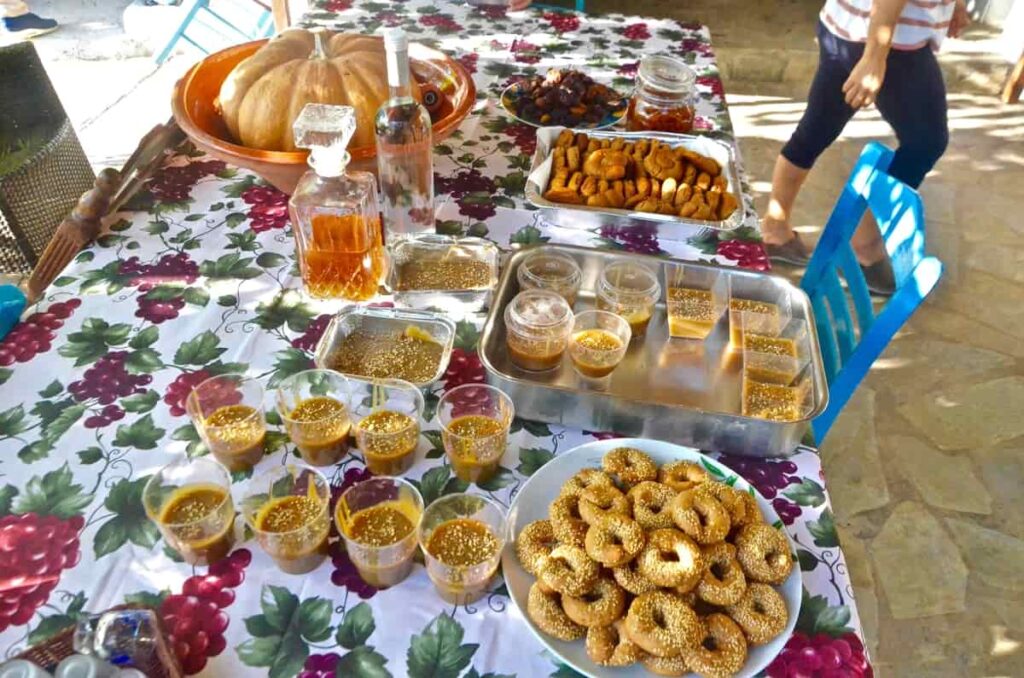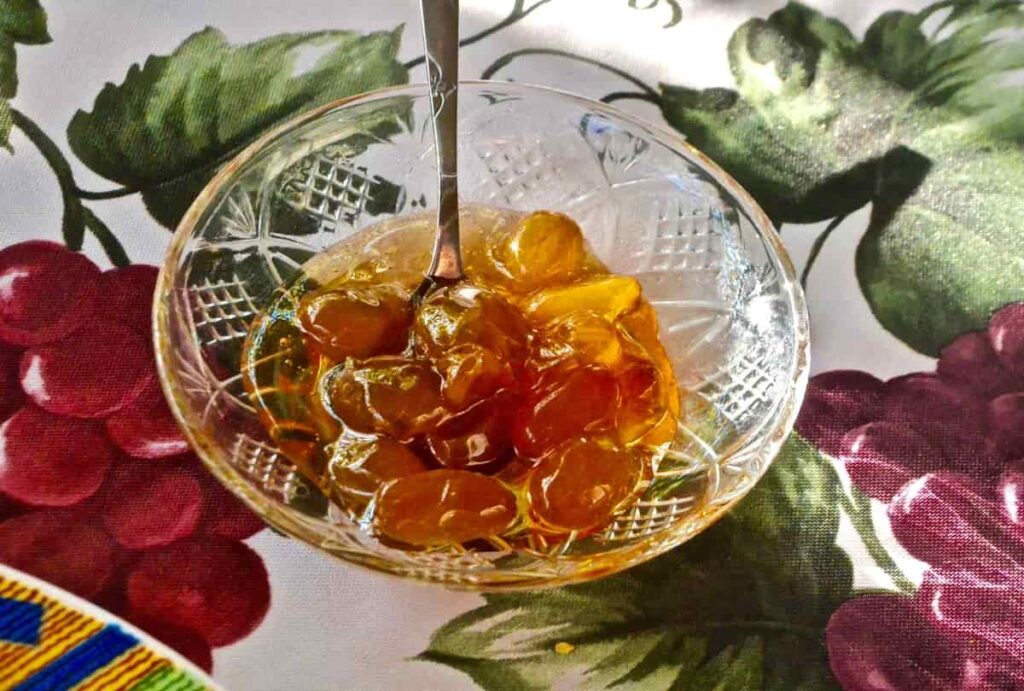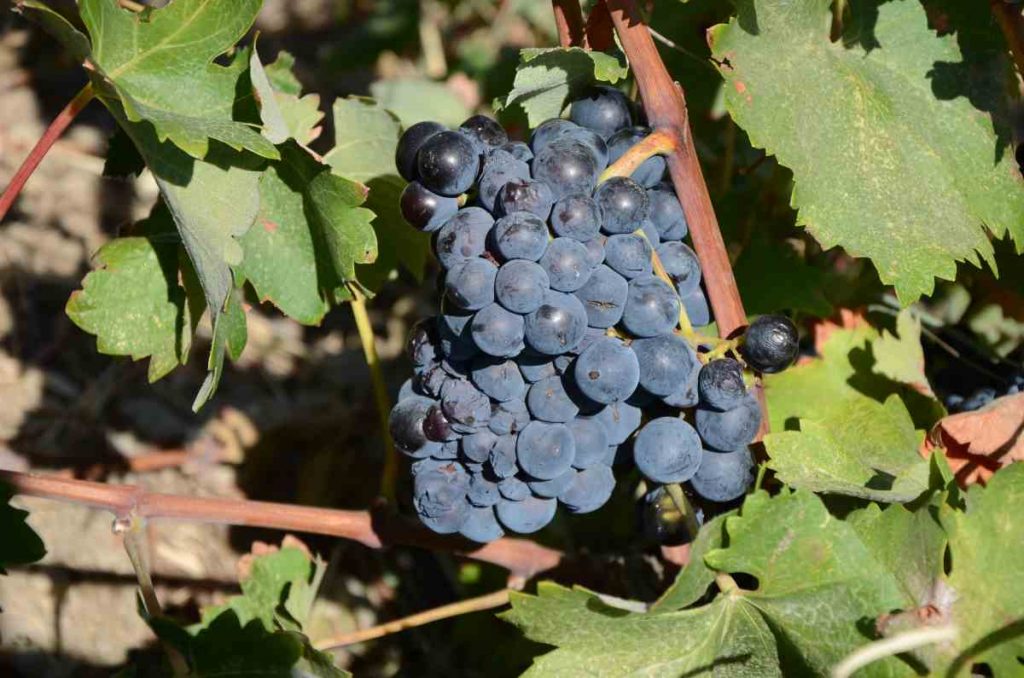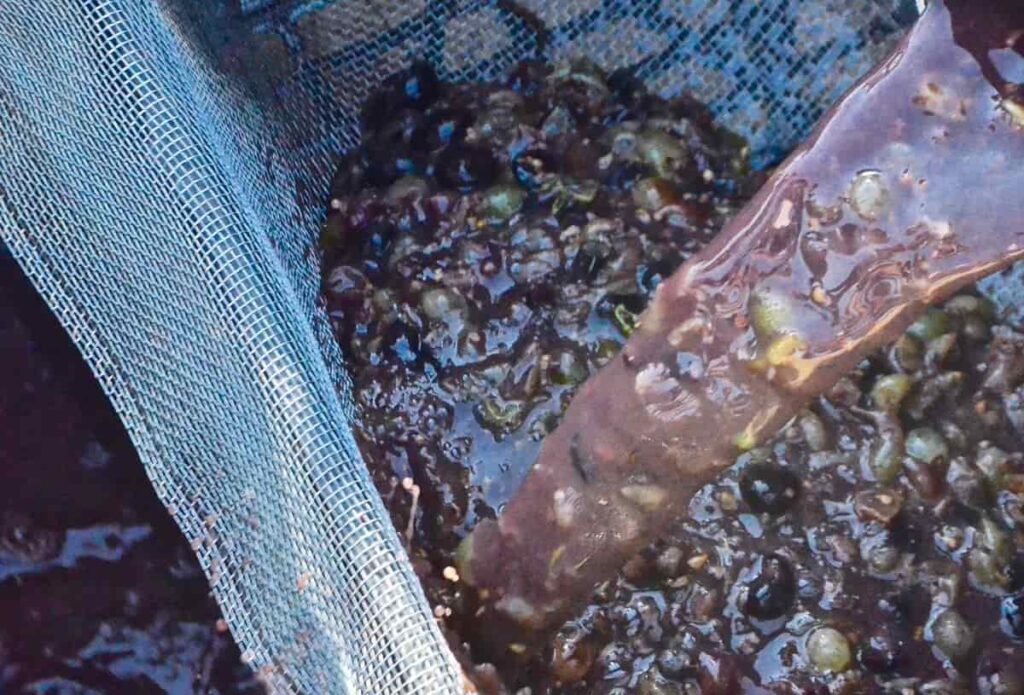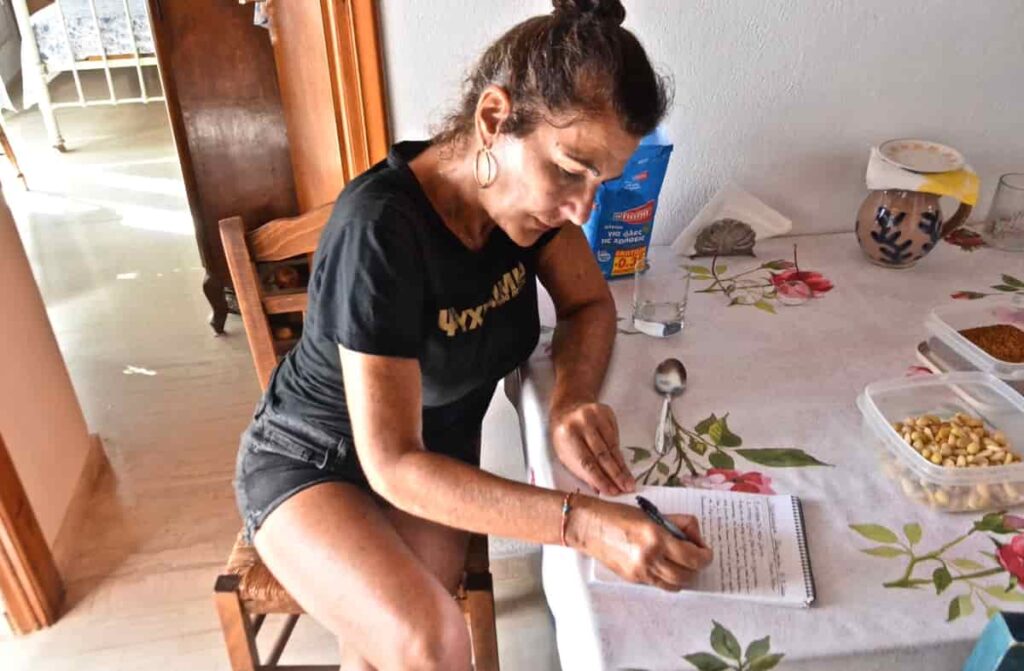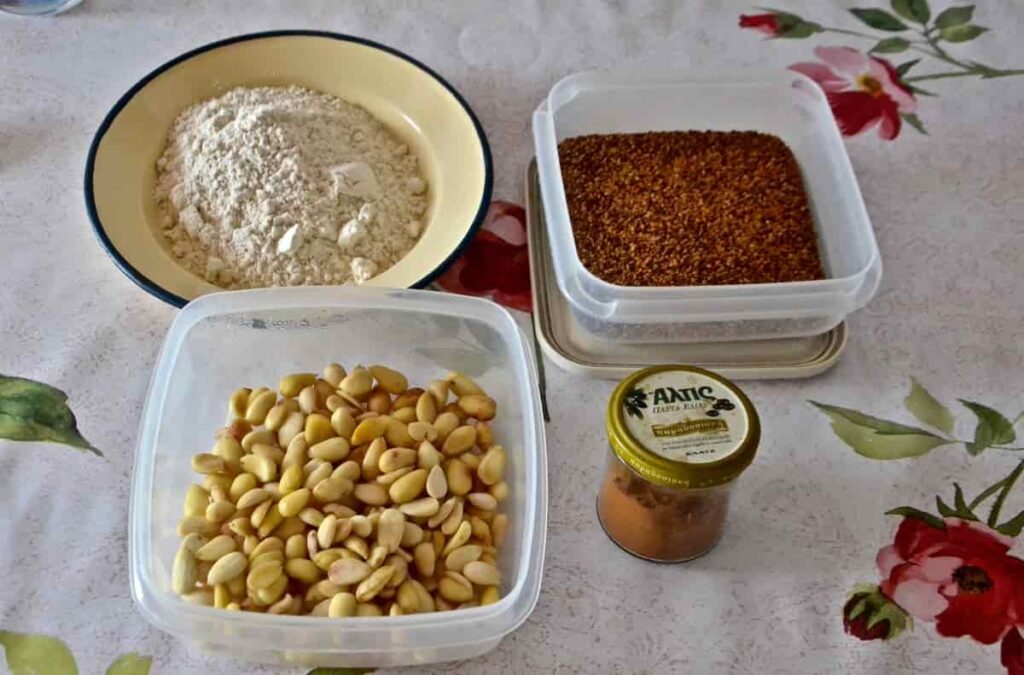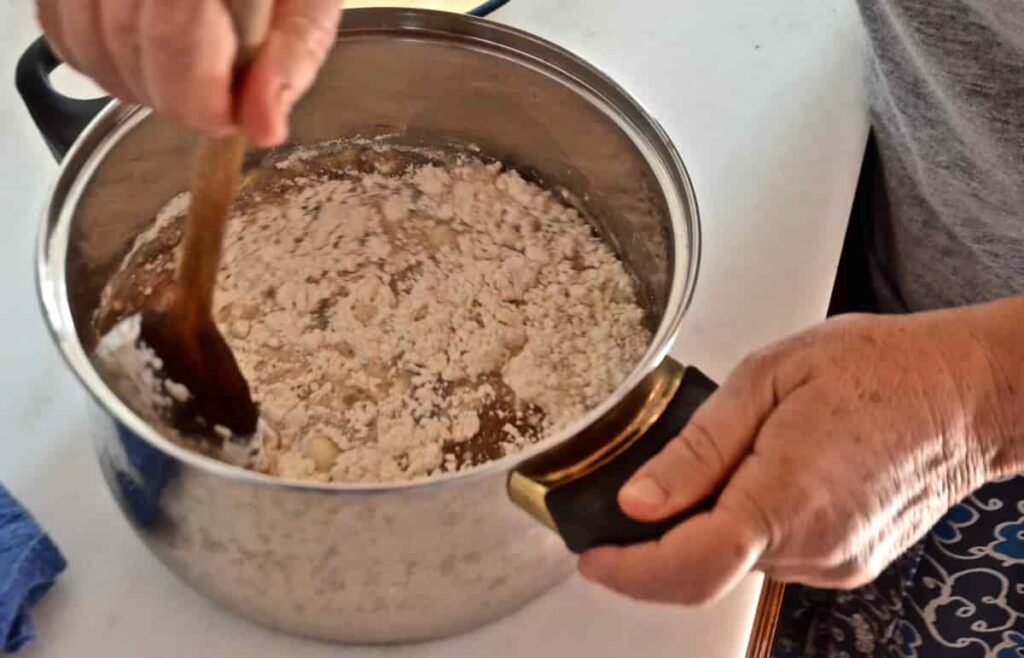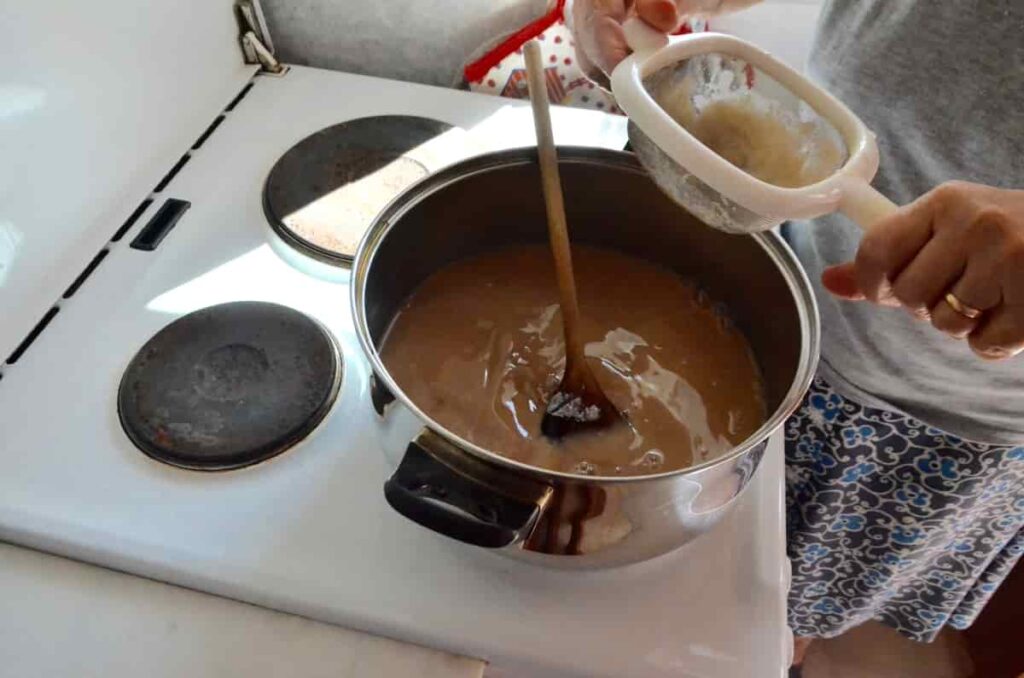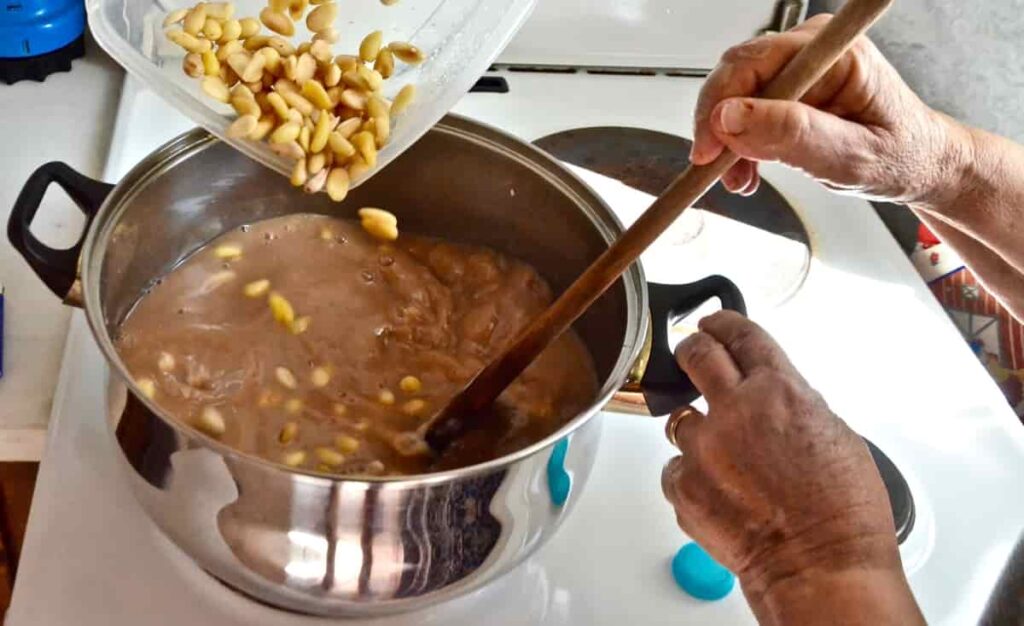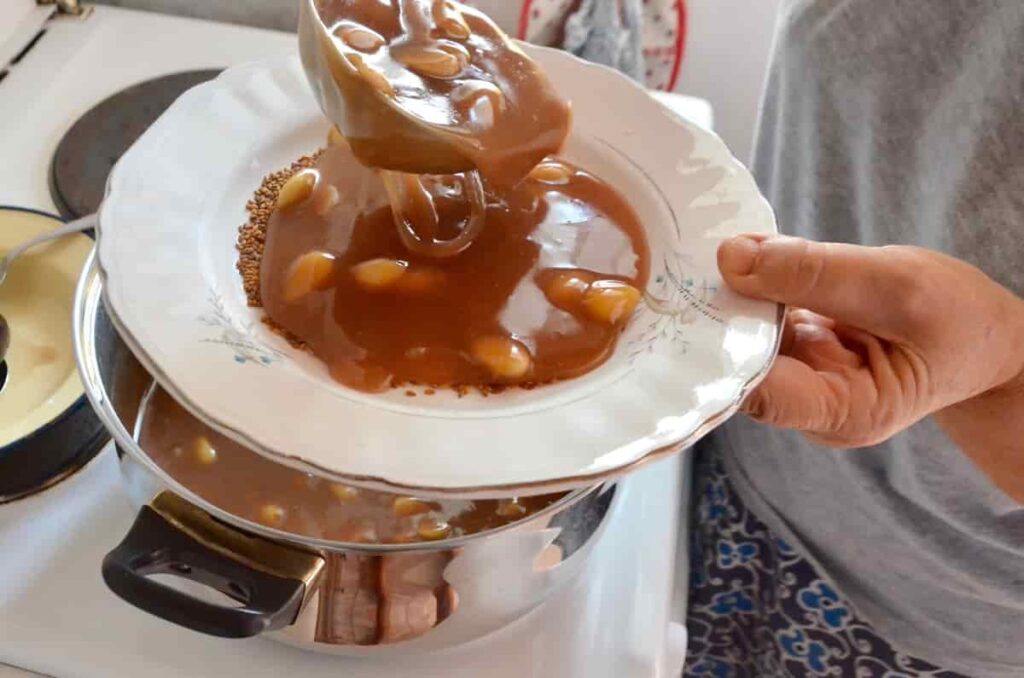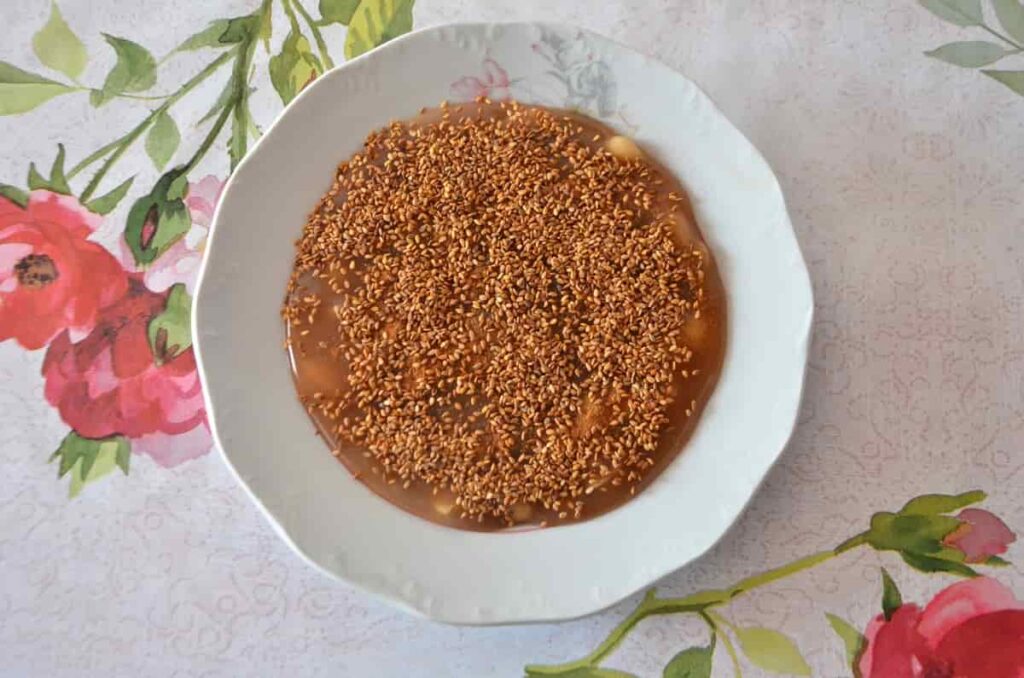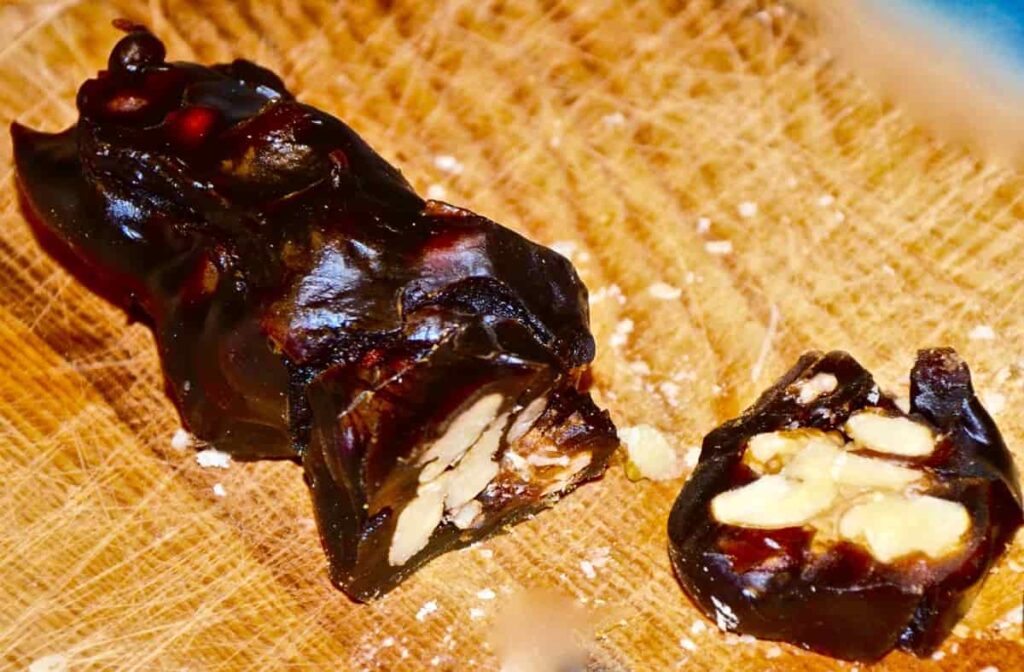The cobbled streets of the settlements of Paros - but also of most of the Cycladic islands - in the first days of September, are flooded by the smells and aromas that the must emanates.
The must is the result of a previous process-ritual, of the harvest, where the annual cycle of life of the vine is completed with the delivery of its fruits, the grapes.
And the men place the must in the basements of the houses, in the barrels, to boil, and the women use it to make petimezi, must flour and mustard cookies.
September is the month of the harvest and the apotheosis of the vineyard cultivated mainly for the fruit and its derivatives (must, petimezi, wine, tsipouro, alcohol, vinegar, raisins, jam and dessert), while the vine leaves in the spring - when tender - are used in cooking.
The grape together with the olive and the wheat, constitutes the trinity that defines the identity of the Mediterranean, participating decisively in the Mediterranean diet. The grape is known from prehistoric times, it is mentioned in the Bible, in Homer, while, according to Greek mythology, Stafylos was the son of Dionysus and Ariadne.
In traditional cuisine, grapes played an important and multidimensional role. The agourida (the unripe grape) ensured the necessary sour, especially in places where there are no lemon trees, while at the same time, through the petimezi, it assumed the sweetness of sugar and honey.
Of course, the greatest contribution of the grape is the production of wine, the blessed gift that nature gave to man, and he in turn turned it from food to joy, hope, revolution, spirit and God.
At the beginning of September, the harvest and the harvest potatoes (harvesting and pressing, on the same day) begin, in the presses of the countryside.
Because most wineries nowadays are deserted, many growers send their grapes to mechanical presses to get the must ready, and to do their bidding to make their own wine in their barrels. Of course the traditional press has its joys and is one shocking experience.
As soon as the must enters the barrels, the boiling begins and they will wait 40 days to make wine. So September, apart from being a harvester, and eager for wine, is the month of the production of must derivatives.
After cutting the must (boiling) it with ashes, you boil it and make the petimezi.
The petimezi is a viscous syrup with a dark color, which is produced by boiling the must and has been used since antiquity as a sweetener.
During the Byzantine Empire, petimezi was called "epsima" (as in antiquity) and entered in all sweets, such as pastels, quinces, lalangias (pancakes), eye drops (donuts), placentas (pies), habits that were maintained until the middle of the 20th century and that have faded to the present day, because sugar syrups are now used for sweeteners . In the old days, the petimezi was the undisputed companion of the housewife, since every summer she could make it with her own hands and then save it for the needs of the whole year.
The cut must is used to make mustard flour, a healthy, fragrant, traditional sweet of September, which we find all over Greece.
Cutting the must with the ashes is necessary to make the must clear and clean and is done as follows:
Put the must in a saucepan and add a tablespoon of ash to a liter.
Once it starts to swell from boiling, take the foam that is formed with a slotted spoon. Then remove the pot and let it settle for at least 12 hours.
Our must is ready to be used either to make petimezi (again by boiling) or to keep it in the freezer for a year or to make must flour.
As its name suggests, must flour is a preparation with main ingredients must and flour (provided it does not smell like flour). The ratio of must to flour is 5: 1
Dissolve the flour in the must we kept. Just before it boils, empty the flour porridge by passing it through a strainer so that it does not have any lumps and stirring constantly with a wooden spoon, while adding the peeled almonds.
Once it starts to boil, lower the temperature and wait for it to thicken, simmering, stirring constantly for about 45 minutes.
Remove from the heat and serve on plates, after adding roasted sesame seeds to the base and on top and finally sprinkle with cinnamon powder.
Mustard flour is served cold or at room temperature. The must cookies are also made from the must, as well as the delicious mustard soutzouki, which we prepare when we dip a string of walnuts in the must.
The days in September in Paros and the Cyclades are very beautiful, because they are days of vintage and must!


